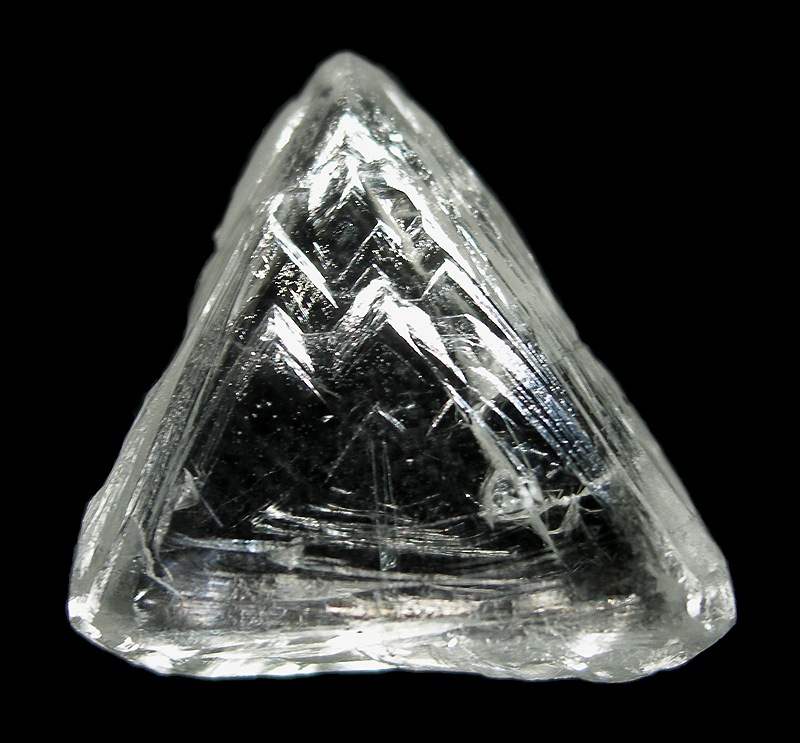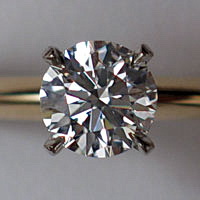
The sparkly ever-so mesmerizing diamond is the most sought-after gemstone in the world and rightly so.
It is not just blindingly beautiful but also incredibly sturdy while being among the rarest gems buried deep under the Earth, so it’s only natural that people gravitate toward this earthy marvel.
Those that are moderately educated about these precious stones know about the 4-Cs of diamonds, but despite being so popular, not much is known about their history, myths and legends. If you randomly asked a person to give you facts on the gemstone, they’d most likely just tell you that it’s an exquisite stone worth millions. While there is much truth to that statement, there is a lot that is not being said.
Yes, diamonds are exotic and unquestionably treasurable, but it is also the lord of myths that add so much more to its uniqueness. But that’s not all; there are also several structural facets of diamonds that remain unknown to many. We believe that not knowing the many cultural and compositional facts regarding this dazzling mineral is a disservice to it, and we seek to right this wrong. So, here are the top twelve most unusual facts about diamonds.
Divine Tears

Among the most ancient and widespread folklore about diamonds is the Roman belief that diamonds were the tears of gods.
Perhaps the heavenly beauty of the diamond seemed too delicate to be terrestrial for the Romans, so they deemed it divine.
Diamonds and Love
The ancient Romans believed that Cupid’s arrow was tipped with diamonds. This myth is considered the oldest connection ever made between love and diamonds. Clearly, Romans were in love with this royally precious stone!
The Most Valuable Item
When we said, Romans were in love with diamonds (to be fair, who isn’t?), we meant head-over-heels irreversibly, deeply in love! Because they believed that the diamond was the most valuable thing on the planet. The famous Roman naturalist, Pliny said, “Diamond is the most valuable, not only of precious stones but of all things in this world.”
Everyone knows that diamonds are exceptionally sturdy, but what they don’t know is that the Herkimer Diamond is a direct representation of this very fact. The name ‘Diamond’ is believed to be derived from the Greek word Adamas (it is also what the Greeks called diamonds) which means indestructible or invincible.
Moreover, it is believed that diamonds are supposedly the hardest substance in the world.
Composition and Sturdiness of Diamonds
 Diamonds are generally made of only carbon molecules linked together in tetrahedral bonds. It is possibly why they are super stout and almost impossible to crack. In addition to giving a diamond its solid build, the carbon molecules keep it transparent. However, sometimes a specimen can have tints of other shades such as blue or yellow when there’s an inclusion. It doesn’t happen often, but when nitrogen or boron particles end up in the composition of a diamond stone, it turns a little yellow or blue.
Diamonds are generally made of only carbon molecules linked together in tetrahedral bonds. It is possibly why they are super stout and almost impossible to crack. In addition to giving a diamond its solid build, the carbon molecules keep it transparent. However, sometimes a specimen can have tints of other shades such as blue or yellow when there’s an inclusion. It doesn’t happen often, but when nitrogen or boron particles end up in the composition of a diamond stone, it turns a little yellow or blue.
Eons Aged Old
Diamonds are not only the rarest and sturdiest; they are also one of the oldest gemstones that take millions of years to form under the Earth. In some cases, a diamond can be up to three million years old.
It is believed that diamonds were mined as early as the fourth century BC. Indians used to collect and trade this glorious gem, which serves as proof of the early existence of diamonds.
Diamonds and Divinity
Ancient Hindus used to tuck diamonds as the eyes on their devotional statues. They also believed that a diamond could keep a person safe from danger. In other words, traditional Hindus associated godly attributes with these gemstones.
The Largest Diamond
The largest diamond was discovered in South Africa in 1905 and was named the Cullinan diamond. It weighed 3106 carats and was gifted to King Edward. However, it was later cut up into smaller pieces, out of which three are showcased in the Tower of London as part of the Crown Jewels.
The largest diamond discovered in North America was mined from Dominion Diamond in Calgary, Canada. It has a diameter of 1.5 inches and a height of over two inches.
The First-Ever Diamond Ring
Diamond is the go-to gem for engagement rings. Whether a person is rich or poor, they make sure to get a diamond ring for their partner. But have you ever wondered who the first person to use the exotic stone on a ring was? Legend has it that, in 1477, Archduke Maxmillian of Austria gave Mary of Burgundy a gold ring with an ‘M’ on top constructed with diamonds.
Planet of Diamonds

Imagine stumbling across a world made of diamonds and no not an imaginary world, a real one, wouldn’t that be amazing? Because now you can, if you become an astronaut. In 2006, scientists discovered a planet in the solar system made of 100% carbon, and they believe that 1.3% of it is pure diamond.
Another mind-blowing diamond-related discovery in astronomy came in the form of a star, made of ten billion trillion (is that even a number?) carats. It was named Lucy after the hit Beatles song Lucy in the Sky with Diamonds.
Sources of Diamond Over the Years
In the 1400s, India was the world’s original source of diamonds. Diamonds mined in India were sold to Venice and other European trade centers. However, three centuries later, in the 1700s, India’s diamond supply declined drastically and Brazil emerged as the most significant source of this precious stone. Brazil enjoyed its status as the top diamond supplier until the late 1800s, and after that, South Africa took over the title.
However, in today’s world, many countries around the globe contribute to diamond production.
Faux Diamonds
Naturally formed diamonds take a while to acquire their shape and composition, which is one of the reasons why they are so expensive. But now experts are making diamonds under controlled conditions in laboratories. And the good news is that the quality and texture is the same as their natural counterparts, but nonetheless, they are synthetic diamonds and are not worth nearly as much as a natural diamond of the same quality and cut.
Diamonds and Healing
In medieval times, people believed that diamonds could cure ailments and nurse back the sick to health. Moreover, some kings in ancient times considered the diamond stone a talisman for soldiers that would bring victory during battles.
The Bottom Line
The extraterrestrial features associated with diamonds may or may not be true; however, their magnificence shall always remain uncontested and will remain the world standard for engagements.
